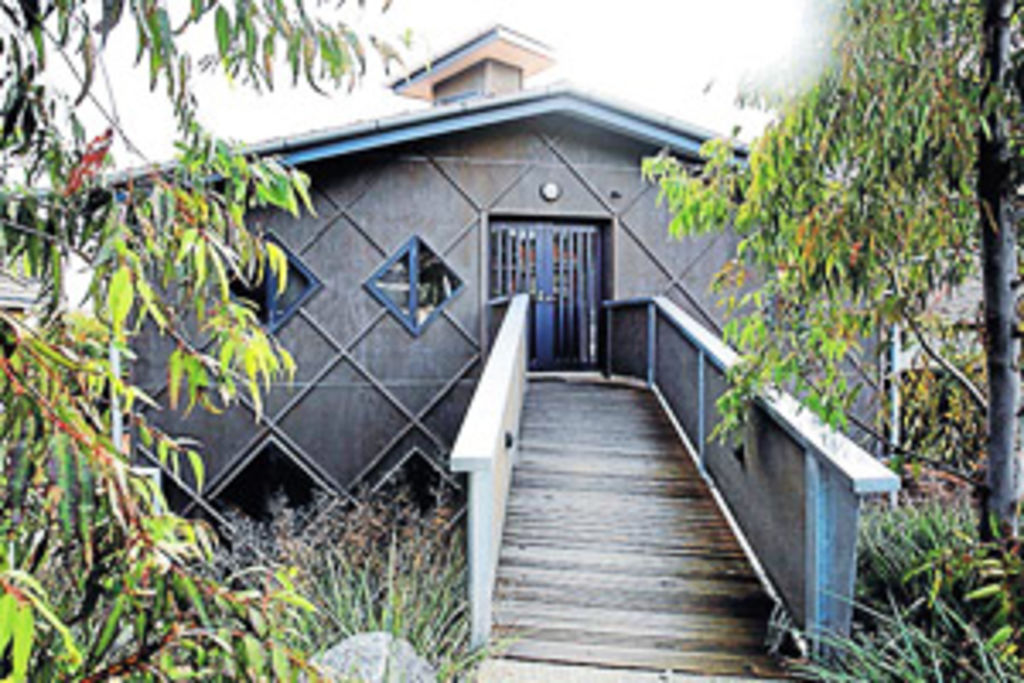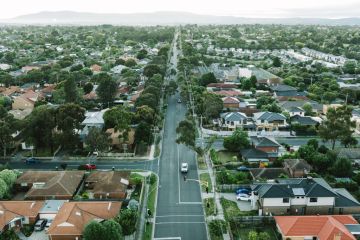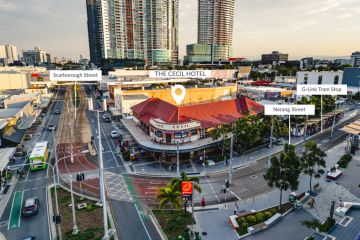Diamond in the suburban rough

In one of those lovely understated streets of Melbourne’s middle suburbs, where the houses are still low-key and loved and sitting in leafy gardens, landscape architect Chris Dance and his partner bought a vacant block and asked his sister, much-awarded architect Suzanne Dance, to design two houses on it.
One house was to be sold and one was for his family to live in. This site is so steep that almost half of it is close to vertical and falls dramatically down to meet Darebin Creek, which forms one edge of the vast green expanse of Darebin Parklands.
It is this parkland, and the views across it to the outline of central Melbourne, plus the outlook from it up the hill to these houses, that determined many of the design moves in this project.
Other factors were the heritage overlay, as the land was close to important Heidelberg and Eaglemont work by famed 20th-century architects Harold Desbrowe-Annear and Walter Burley Griffin, and it was from the work of these men that Dance took some clues.
There was also a height control that required the site to be excavated to achieve two houses of two levels. Ultimately, the site had to be excavated in a gentle series of six plateaus running down to where the land falls so steeply that building was not possible.
The house we see from the street is a jewel-like, deep-brown square with timber straps attached in a diamond pattern across all facades, with some beautifully detailed diamond-shaped windows. The roof repeats this diamond as its corners, rising to a central lantern that can be opened for ventilation.
A bridge leads from the footpath to the front door and into the upper level of the house. This level, featuring the living and dining areas, the main bedroom and en suite, was designed to be self-contained if needed at a later date.
The lower level opens out to natural landscape a couple of metres below street level and has three bedrooms and a bathroom.
The architect wanted to use Burley Griffin’s technique of cladding the brickwork in timber tiles lapped over each other in the way that roof tiles are laid but, for reasons unknown, this was not allowed. So she used Ecoply painted in the deep brown and patterned it with the straps forming the diamonds.
The second house is a series of pavilions that step down the terrain. You enter at the middle point and go up to the bedroom pavilions or down to the two living pavilions, the lowest of which opens out to a breathtaking view of Darebin Park and two levels of outdoor living.
Each pavilion repeats the roof lantern of the front house and these, too, can be opened. The use of pavilions stepping down the land enabled the making of a landscape at each level, so there are views from all the spaces.
The houses have photovoltaic cells for electricity, solar hot water and rainwater tanks, with laundry water going straight to the garden.
The houses are built in reverse brick veneer, whereby the brick wall is on the inside and the exterior is clad in a lightweight material. Reverse brick veneer is widely accepted as being a highly energy-efficient building model and yet has not taken off in Australia.
These two houses are a poetic response to an extraordinarily difficult, if very rewarding, site. They are beautifully considered objects set skilfully in a remade landscape.
We recommend
We thought you might like
States
Capital Cities
Capital Cities - Rentals
Popular Areas
Allhomes
More







